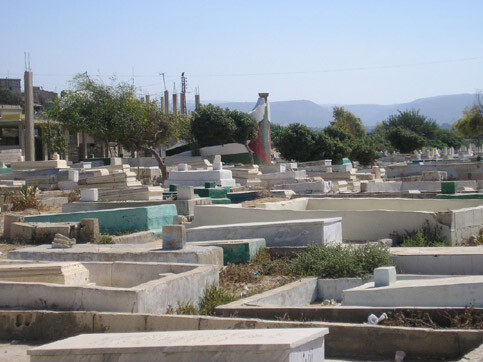IRIN 26 July 2006

Among the wounded in the hospital are six Palestinians from the Rashidiya Camp just south of Tyre, injured by Israeli shelling in the early hours of Monday morning. The camp is home to 26,000 Palestinian refugees. (Arjan El Fassed)
TYRE — The head of one of the main hospitals in Tyre, which has been treating civilians injured by the Israeli bombardment of south Lebanon, says his facility is rapidly running out of resources.
“We can keep working like this for 10 more days and after that, God knows what will happen,” says Dr Ahmad Mroue, chairman of the Jabal Amel Hospital in Tyre.
Staffed with 35 doctors, the hospital has treated 331 wounded civilians and has had to deal with 27 fatalities since the conflict began on 12 July. Dr Mroue told IRIN that up to 20 critically injured people are being transported to Beirut each day to keep beds free.
Among the wounded in the hospital are six Palestinians from the Rashidiya Camp just south of Tyre, injured by Israeli shelling in the early hours of Monday morning.
The camp is home to 26,000 Palestinian refugees and has educational, medical, social and relief services provided by the United Nations Relief Works Association (UNRWA). UNRWA has condemned this attack.
Fifteen-year-old Mohammed Aliane was also injured in the attack. “I was sleeping in my grandparents’ room when the shell landed on our house. The walls collapsed onto me and my grandmother was hurt on her legs by flying stones,” says the young boy, straining for breath as he lies in a hospital bed.
Aliane suffered a broken arm, a fractured hip and has undergone surgery to remove pieces of stone lodged in his ribs, the nurse says.
Some would say Aliane was lucky to have access to medical facilities. The picturesque ancient port city of Tyre is now a shadow of its former self. Many of its buildings are scarred from 15 days of shelling, while piles of shattered glass are scattered around its streets.
Adding to the deafening reverberations of Israeli air strikes throughout the night, is the normal window-rattling day time phenomena of locals throwing dynamite into the sea to catch fish.
Roads leading to the city are virtually impassable, three-metre craters scattered along them, many with smashed cars lying within, making the logistics of relief work a nightmare.
Related Links
This item comes to you via IRIN, a UN humanitarian news and information service, but may not necessarily reflect the views of the United Nations or its agencies. All IRIN material may be reposted or reprinted free-of-charge; refer to the copyright page for conditions of use. IRIN is a project of the UN Office for the Coordination of Humanitarian Affairs.